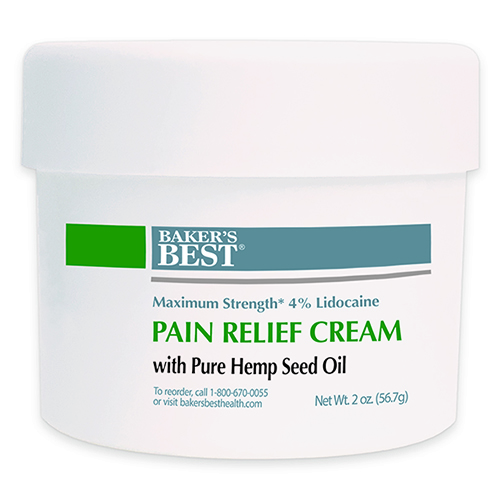Discover the Topical Pain Lotion Solution You Need for Quick Alleviation
In the realm of handling discomfort and seeking alleviation, the globe of topical discomfort creams provides a diverse variety of alternatives to check out. These specialized lotions are developed to target details locations and give fast-acting alleviation, but navigating the myriad of choices can be daunting. Comprehending exactly how these lotions function, the crucial components to look for, and the most reliable application strategies can make a substantial difference in your discomfort monitoring routine. It's necessary to take into consideration elements such as potency, formulation, and total efficiency when it comes to discovering the right topical discomfort cream remedy for your requirements. The quest for the ideal discomfort alleviation option awaits.
Benefits of Topical Discomfort Lotions
When seeking remedy for local discomfort, topical pain creams provide a effective and hassle-free solution. These creams are developed to be used straight to the skin over the affected area, allowing for targeted pain alleviation without the need to ingest medication orally. Among the vital advantages of topical discomfort lotions is their capability to supply active ingredients directly to the website of discomfort, bypassing the gastrointestinal system and possibly reducing the threat of systemic adverse effects.
Furthermore, topical pain creams are usually fast-acting, giving quick alleviation to the damaged location (pain cream). This fast beginning of activity can be especially helpful for people experiencing acute discomfort or pain. In addition, several topical discomfort lotions are created with ingredients that have anti-inflammatory properties, better assisting in discomfort relief by reducing swelling and inflammation in the damaged location
How Topical Discomfort Lotions Job
Topical discomfort creams function by straight targeting the resource of discomfort through their application to the damaged area, helping with local alleviation without the need for dental consumption. These creams consist of active ingredients such as lidocaine, capsaicin, or menthol, which operate in numerous methods to relieve pain. Lidocaine, as an example, is a numbing representative that blocks pain signals from the nerves in the afflicted location. Menthol develops a cooling sensation that sidetracks from the pain, while capsaicin, derived from chili peppers, aids decrease pain by depleting a natural chemical called material P.
When put on the skin, these lotions pass through the skin and dermis to reach the underlying tissues where the pain originates. As soon as taken in, the active components disrupt the transmission of discomfort signals, lower swelling, or customize the understanding of pain by the nerves. Unlike oral drugs, topical discomfort creams deliver targeted relief without circulating via the blood stream, decreasing systemic side results. This local technique improves the effectiveness of the therapy, offering quick and reliable discomfort relief directly at the website of discomfort.
Trick Components to Seek

Application Tips for Best Outcomes
Optimizing the application method of a topical discomfort lotion is crucial for accomplishing the ideal feasible results in discomfort relief. Next, take go right here a tiny quantity of the topical discomfort lotion and use it to the damaged location.
Additionally, constantly clean your hands extensively after applying the cream to prevent accidentally transferring it to sensitive locations such as the eyes. Be constant with the application timetable Discover More Here advised by the item instructions to optimize the benefits of the topical pain cream.
Selecting the Right Product for You
When taking into consideration the option of a topical discomfort cream that best matches your demands, it is vital to assess the certain demands of your discomfort relief goals. Begin by determining the kind of pain you are experiencing, whether it be muscle soreness, joint discomfort, joint inflammation, or various other conditions. Different topical lotions are developed to target certain sorts of pain, so understanding your discomfort resource is essential in choosing the right item.
Next, consider any allergic reactions or sensitivities you may need to specific ingredients commonly discovered in discomfort lotions, such as menthol or capsaicin. Reading the product label meticulously and doing a patch examination can help protect against any adverse reactions (pain cream). In addition, think about the scent and appearance preferences you have, as these can influence your overall experience with the lotion
Lastly, seek advice from with a healthcare specialist or pharmacologist for suggestions based upon your individual needs and medical history. They can give beneficial insights and guide you towards a topical discomfort lotion that aligns with your pain monitoring goals. By very carefully analyzing these factors, you can choose the most ideal topical pain hanker reliable alleviation.
Verdict
In conclusion, topical pain creams provide a quick and efficient service for browse around these guys discomfort alleviation. By understanding how these lotions job and the essential ingredients to look for, people can discover the right item to suit their demands. Using the lotion appropriately and consistently can bring about ideal results. It is necessary to select a product that straightens with your certain pain problems for the very best feasible result.
When looking for alleviation from localized discomfort, topical discomfort creams use a effective and practical solution (pain cream). Furthermore, several topical pain creams are developed with ingredients that have anti-inflammatory residential or commercial properties, additionally assisting in discomfort relief by reducing swelling and inflammation in the affected area


